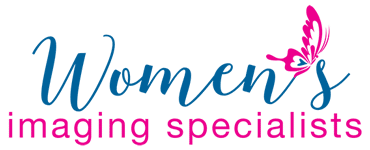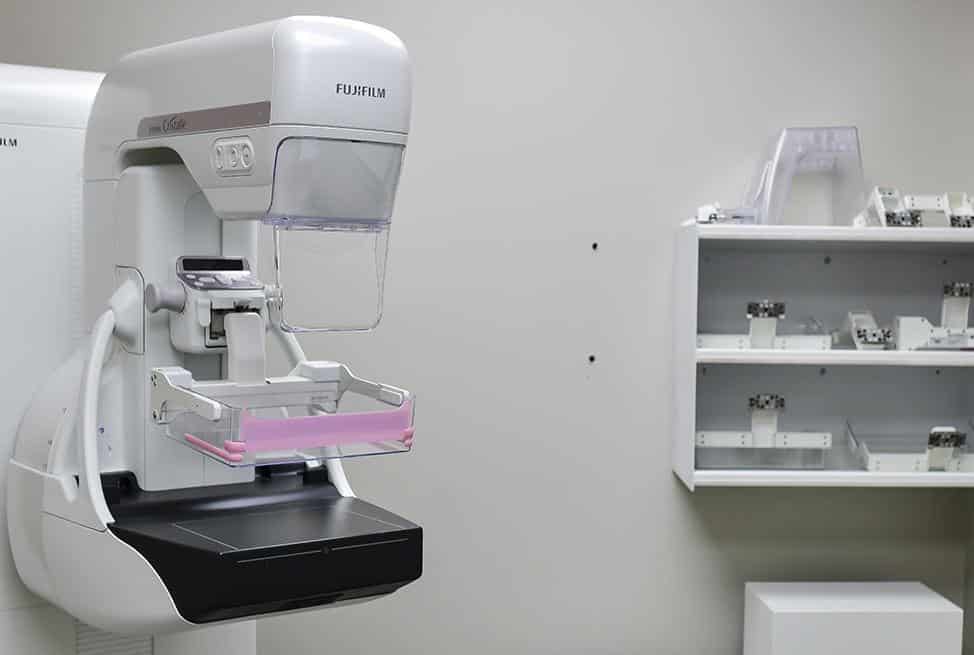We’re excited to let you know that we offer 3D mammography. This extraordinary technology lets WIS radiologists see breast tissue in a way never before possible. Learn more about 3D mammograms and why they are one of the most important advancements in breast cancer detection in over 30 years.
What is 3D Mammography (Tomosynthesis)?
3D captures multiple slices of breast images, all at different angles. The images are brought together to create crystal-clear 3D reconstruction of the breast. The radiologist is then able to review the reconstruction, one thin slice at a time, almost like turning pages in a book. That makes it easier for doctors to see if there’s anything to be concerned about. And, there’s less chance for a cancer to hide behind overlapping tissue. If detected early, the five-year survival rate is 97%.
What To Expect During Your Exam
A 3D mammography exam is very similar to a traditional mammogram. Just as with a digital mammogram, the technologist will position you, compress your breast under a paddle and take images from different angles. A 3D mammography exam may be used as a screening tool in conjunction with a traditional digital mammogram or may be used by itself for a diagnostic mammogram.
During the 3D mammography part of the exam, the X-ray arm sweeps in a slight arc over the breast, taking multiple breast images in just seconds. The radiologist is then able to view your breast tissue in one-millimeter layers. Instead of viewing all the complexities of your breast tissue in one flat image, the doctor can examine the tissue one page or “slice” at a time.
There is no additional compression required with 3D mammography, and it only takes a few seconds longer for each view. The ARRT registered technologist will view the images at their computer workstation to ensure they have captured adequate images for view by the radiologist, who studies them and reports the results.
Why is a yearly mammogram important?
Mammography can show an abnormality up to two years before it could be felt by yourself or a physician. The American College of Radiology (ACR) recommends having a yearly mammogram, beginning at age 40 for women at average risk of breast cancer.
Battling breast cancer is best through early detection when the cancers are the most curable and breast-conservation therapies are available.
How do I prepare for my mammogram appointment?
Please remember to bring your order and insurance card with you on the day of your appointment. You may be asked to remove jewelry or eye glasses that might interfere with the x-ray.
You should ALWAYS inform your doctor if there is even a possibility of you being pregnant. You should not wear deodorant, powder, lotion, or perfume under your arms or on your breast on the day of the exam.
Frequently Asked Questions
Now that 3D mammography is available at our facility, you may have some questions. We’ve prepared this short Q&A to address concerns you may have.
3D mammography (tomosynthesis) is a revolutionary, state-of-the-art screening and diagnostic tool designed for early breast cancer detection. During the 3D part of the exam, the X-ray arm sweeps in a slight arc over your breast, taking multiple breast images. Then, a computer produces a 3D image of your breast tissue in one-millimeter slices, providing greater visibility for the radiologist to see breast detail in a way never before possible. They can scroll through images of your entire breast like pages of a book. The 3D images make it possible for a radiologist to gain a better understanding of your breast tissue during screening and the confidence to reduce the need for follow-up imaging.
With conventional digital mammography, the radiologist views all the complexities of your breast tissue in one flat image. Sometimes breast tissue can overlap, giving the illusion of normal breast tissue looking like an abnormal area. By looking at the breast tissue in one-millimeter slices, the radiologist can provide a more confident assessment. In this way, 3D mammography finds cancers missed with conventional 2D mammography. It also means there is less chance your doctor will call you back later for a “second look,” because now they can see breast tissue more clearly.
A screening mammogram is your annual mammogram that is done every year. Patients presenting for this routine exam will be asymptomatic (having no breast issues or problems). A diagnostic mammogram can result from an abnormal screening mammogram or can be ordered for a patient with a breast issue.
3D mammography complements standard 2D mammography and is performed at the same time with the same system. There is no additional compression required, and it only takes a few more seconds longer for each view.
Very low X-ray energy is used during the exam, just about the same amount as a traditional mammogram done on film.
It is approved for all women who would be undergoing a standard mammogram, in both the screening and diagnostic settings.

